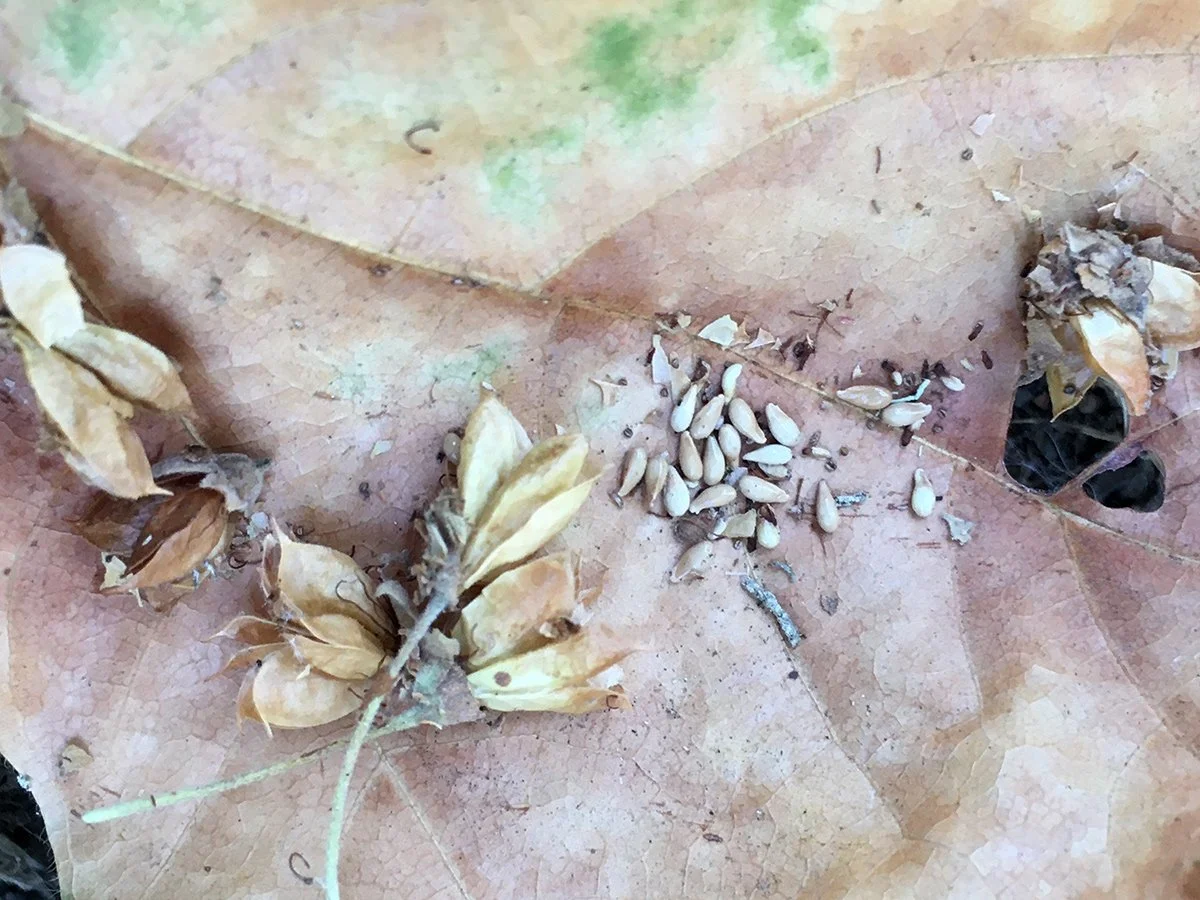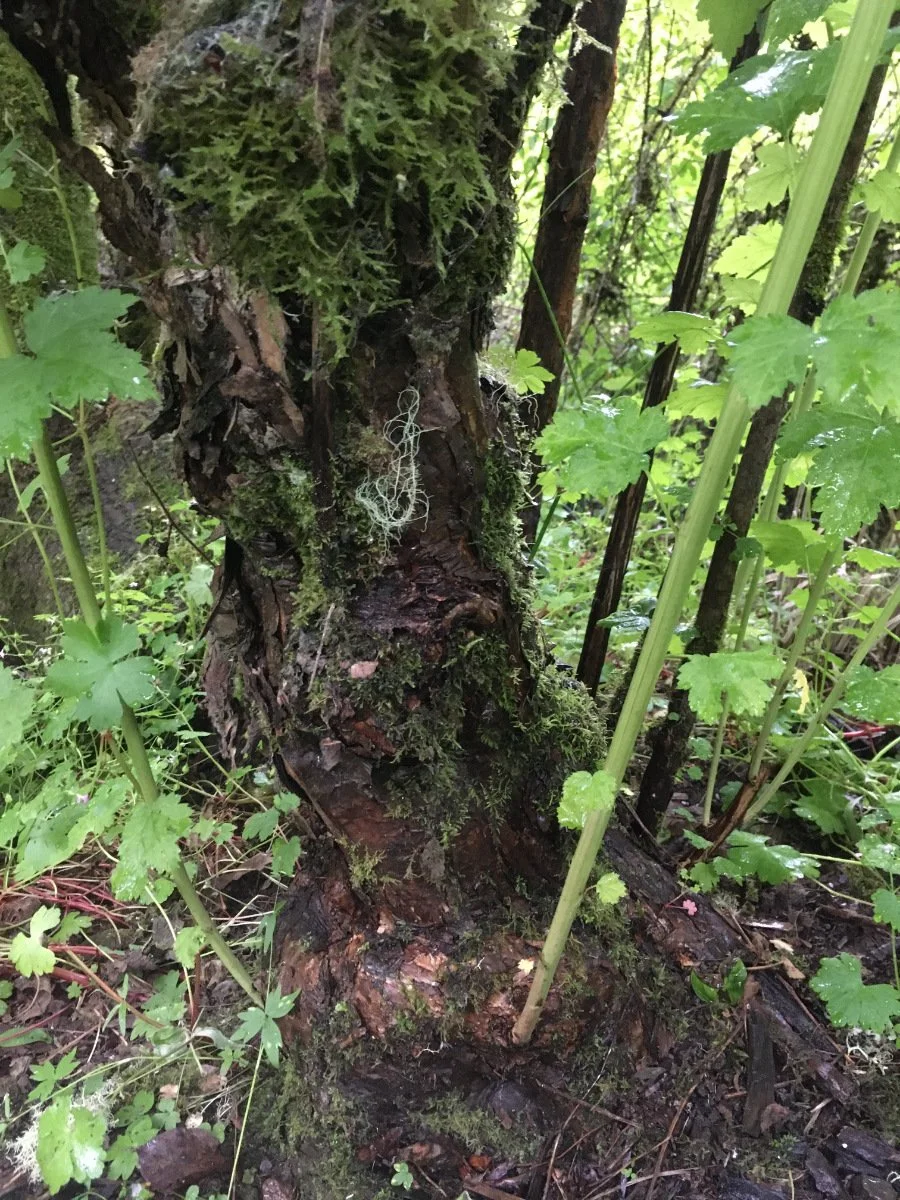Pacific Ninebark (Physocarpos capitatus)
The Rose Family (Roseceae)
The canopy of the shrub grows to be quite dense creating a shady understory when it leafs out in spring. Many of the limbs curve outwards as they grow creating archways over and along the path.
Buds & Leaves
Alternate, deciduous, 3 - 5 toothed lobes.
Flowers
White, small, 5 petals; terminal, round clusters.
Seeds
Pacific Ninebark shrubs become loaded with clusters of seed pods that can turn a brilliant red as they are forming. In summer, the pods dry out, turn brown and release their seeds. I squeezed one of the clusters a few times and small seeds came pouring out. They are smooth and a little shiny.
Several sources state that this plant is poisonous or toxic. I was unable to find any mention of the seeds being a food source for any animals, such as birds, mice, ants, etc. I have found a Pacific Ninebark shrub down by the river that had been chewed by a beaver.
Bark
The newer bark is brown and peeling revealing a creamy layer. The older barker becomes dark, scaly and can become covered with mosses and lichen. On the lily pond trail out in the wetlands, I see lungwort lichen thickly covering the branches of this shrub.
References
Mathews, Daniel. Cascade-Olympic Natural History. Raven Editions in conjunction with Portland Audubon Society, 1988.
Pojar, Jim, and Andy MacKinnon. Plants of the Pacific Northwest Coast: Washington, Oregon, British Columbia and Alaska (Revised). B.C. Ministry of Forests and Lone Pine Publishing, 1994.
Quick Reference:
Height: 6 - 13’ tall
Leaves: Alternate, deciduous, 3 - 5 toothed lobes.
Flowers: White, small, 5 petals; terminal, round clusters.
Fruit: Reddish bunches of dried inflated follicles.
Habitat: Wet, somewhat open places like streamside thickets or edges of moist woods.
Photo Location:
Mt. Pisgah Arboretum
Eugene, OR
























